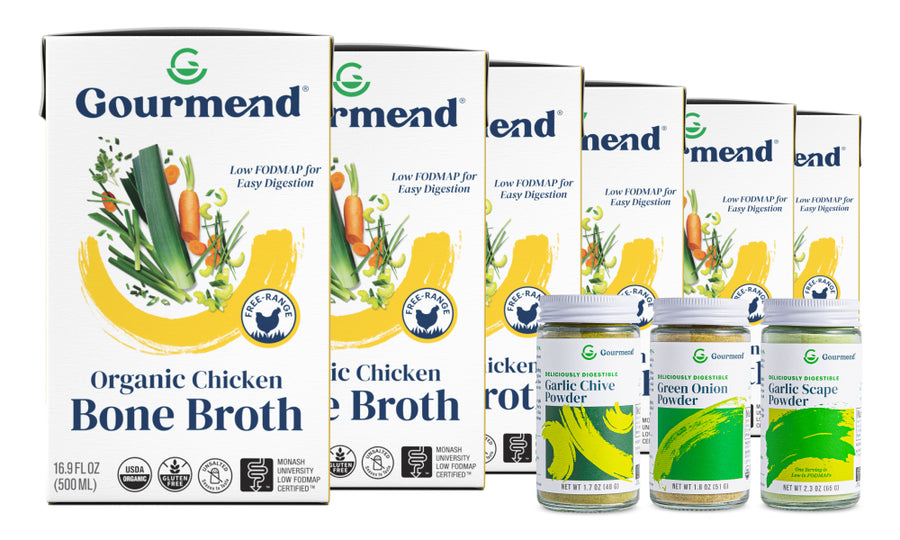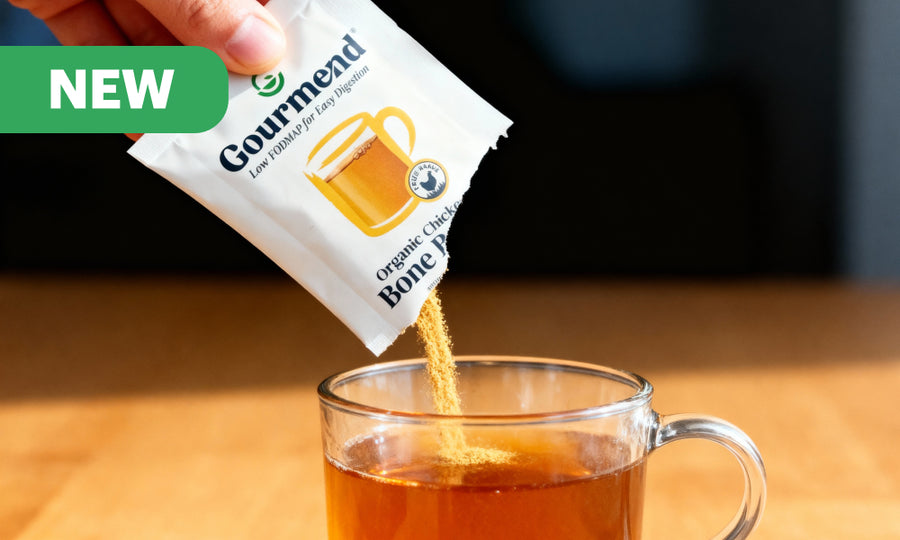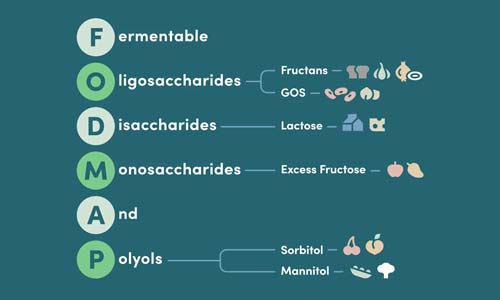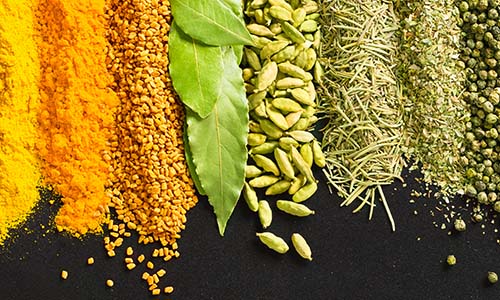Is Asparagus Low FODMAP? Your Complete Guide
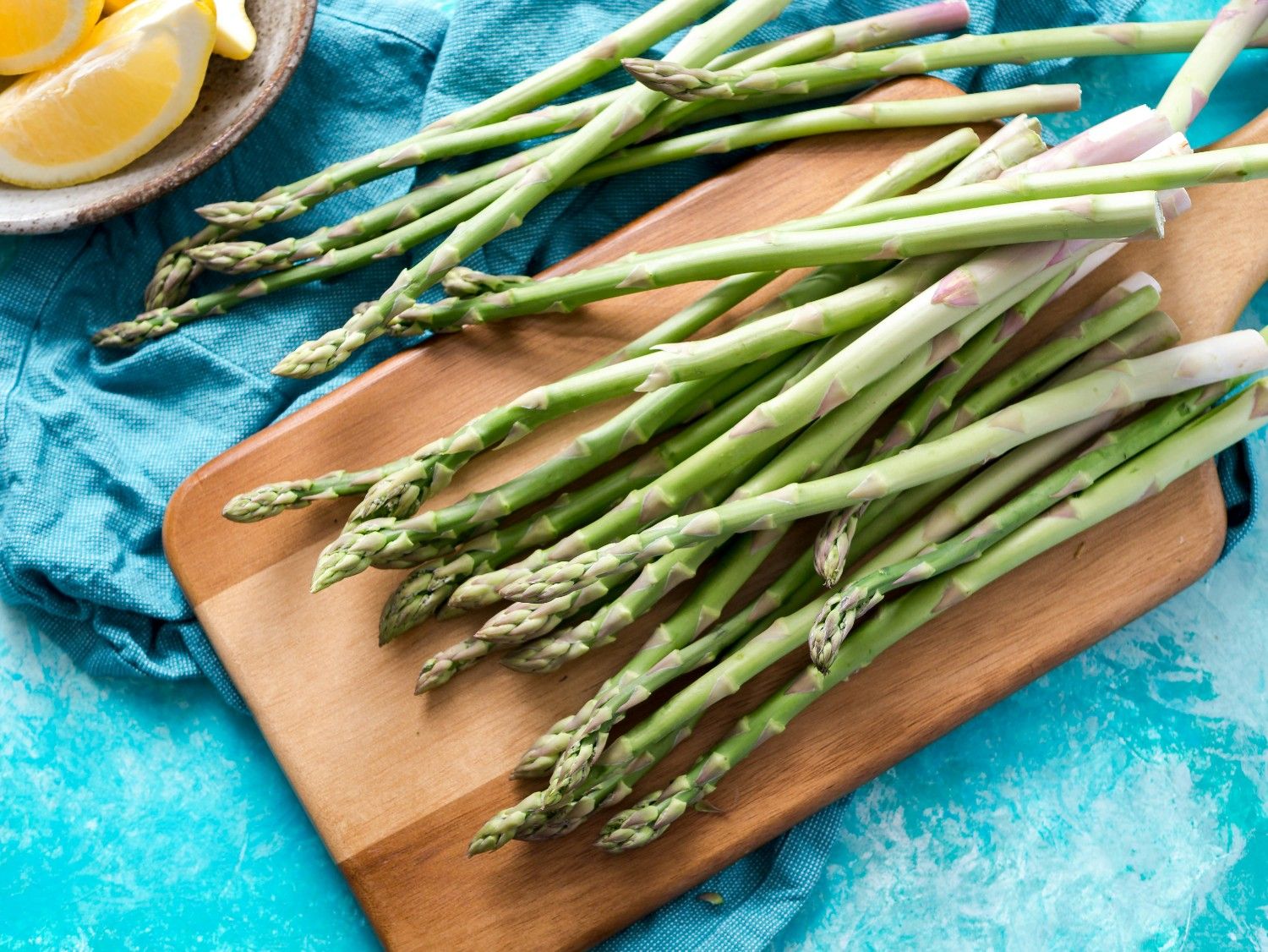
Enjoying Bold Flavor on a Low FODMAP Diet
Picture this: you're standing in the produce aisle, eyeing those gorgeous emerald asparagus spears, wondering if they'll send your digestive system into chaos. You're not alone,this question lands in our inbox more than any other vegetable query from Gourmend Foods customers navigating the low FODMAP lifestyle.
Key Takeaways
- Many people following a low FODMAP diet wonder if asparagus is safe to eat.
- Asparagus is a popular vegetable that often raises digestive concerns for those with sensitivities.
- The question about asparagus and its FODMAP content is frequently asked by Gourmend Foods customers.
- Understanding whether asparagus fits into a low FODMAP lifestyle is important for managing digestive health.
Table of Contents
- Enjoying Bold Flavor on a Low FODMAP Diet
- FODMAPs 101: The Science Behind the Plate
- Asparagus Under the Lens: Is It Low FODMAP?
- Mastering Asparagus on a Low FODMAP Diet
- Asparagus vs. Other Greens: FODMAP Showdown
- How to Build Flavorful Low FODMAP Meals,No Compromise
- Living Your Gourmet Life: Practical Tips & Tools
- Key Takeaways: Your Gourmet, Gut-Friendly Roadmap
Here's the thing: eating for digestive wellness doesn't mean sacrificing the gourmet flavors you crave. At Gourmend Foods, we've built our entire mission around proving that bold, restaurant-quality taste and gut-friendly ingredients can absolutely coexist. Whether you're managing IBS symptoms or simply seeking cleaner digestion, you deserve meals that excite your palate without the post-dinner regret.
Asparagus sparks so many questions because it sits in that tricky middle ground,undeniably nutritious and delicious, yet potentially problematic for sensitive digestive systems. Today, we're diving deep into the science behind asparagus and FODMAPs, giving you the complete roadmap to enjoy this spring vegetable confidently (or find even better alternatives that won't leave you guessing).
FODMAPs 101: The Science Behind the Plate
What Are FODMAPs, and Why Do They Matter?
Let's start with the basics. FODMAPs stands for Fermentable Oligosaccharides, Disaccharides, Monosaccharides, and Polyols,essentially, short-chain carbohydrates that your small intestine struggles to absorb completely.
When these compounds reach your large intestine undigested, gut bacteria ferment them rapidly, producing gas and drawing water into your digestive tract. The result? That familiar constellation of symptoms: bloating, cramping, unpredictable bowel movements, and general digestive discomfort that can derail your entire day.
For people with IBS or sensitive digestion, FODMAPs aren't inherently "bad",they're simply harder to process. The goal isn't to eliminate them forever, but to understand your personal tolerance levels so you can eat with confidence.
This is where our flavor-first philosophy at Gourmend comes into play. We believe that managing digestive wellness should enhance your culinary experience, not restrict it. Every product we create,from our umami-rich bone broths to our carefully crafted seasonings,proves that gut-friendly eating can be absolutely gourmet.
The Low FODMAP Diet: How It Works
The low FODMAP approach isn't a permanent elimination diet,it's a strategic three-phase process designed to give you lasting relief and food freedom:
- Elimination Phase (2-6 weeks): Remove high FODMAP foods to calm your digestive system and establish a symptom-free baseline.
- Reintroduction Phase (6-10 weeks): Systematically test individual FODMAP groups to identify your specific triggers and tolerance levels.
- Personalization Phase (ongoing): Create your customized eating plan that maximizes variety while respecting your digestive boundaries.
The beauty of this approach lies in its focus on abundance rather than deprivation. You're not sentenced to a lifetime of bland, restrictive meals,you're discovering exactly which foods serve your body best, then building a sustainable, delicious way of eating around that knowledge.
What Qualifies a Food as "Low" or "High" FODMAP?
Here's where portion size becomes absolutely crucial. A food isn't simply "good" or "bad",it's all about the amount you consume and how different FODMAP compounds accumulate in your system throughout the day.
Research from Monash University (the gold standard for FODMAP testing) shows that many foods shift from low to high FODMAP as serving sizes increase. This is particularly relevant for vegetables like asparagus, which contain fructose and fructans,two FODMAP types that can quickly stack up in larger portions.
Key Insight: Fructans are chains of fructose molecules that appear naturally in many vegetables. They're excellent prebiotics for gut health, but they can trigger symptoms in sensitive individuals when consumed in larger amounts.
Understanding this nuance empowers you to make informed choices rather than completely avoiding nutritious foods. Sometimes a small portion fits perfectly into your low FODMAP framework, while a standard serving might push you over your tolerance threshold.
Asparagus Under the Lens: Is It Low FODMAP?
Asparagus FODMAP Content Explained
Let's answer the burning question directly: Is asparagus low FODMAP? Unfortunately, asparagus is naturally high in both fructose and fructans, making it a high FODMAP food in typical serving sizes.
Standard asparagus portions (about 75g or 5 medium spears) contain high levels of FODMAPs that can trigger digestive symptoms. However, very small portions (approximately 12g or ⅔ of one spear) test as low FODMAP.
Here's the breakdown that explains why asparagus causes so much confusion:
- High FODMAP serving: 75g (roughly 5 medium spears) - contains significant fructose and fructan levels
- Low FODMAP serving: 12g (about ⅔ of one medium spear) - stays within safe FODMAP limits
- The culprit compounds: Inulin-type fructans concentrated throughout the spear, plus excess fructose
You might be wondering, "Why such a tiny safe serving?" Asparagus contains high concentrations of inulin, a prebiotic fiber that's incredibly beneficial for overall gut health but problematic for those with FODMAP sensitivities. The fructan content doesn't diminish significantly with cooking, so that limitation remains consistent whether you're enjoying fresh, roasted, or steamed asparagus.
The Gut Impact: Prebiotic Perks and Pitfalls
This is where asparagus becomes genuinely interesting from a nutritional standpoint. Those same fructans that cause digestive distress for sensitive individuals are actually powerful prebiotics,they feed beneficial gut bacteria and support long-term digestive health.
Nutritional Benefits
- Rich in folate, vitamin K, and antioxidants
- Contains glutathione, a powerful detoxification compound
- Provides prebiotic fiber for beneficial gut bacteria
- Low in calories but high in essential nutrients
FODMAP Considerations
- High fructan content triggers IBS symptoms
- Excess fructose can cause digestive discomfort
- Very limited safe serving size on low FODMAP diet
- Compounds remain problematic regardless of cooking method
For individuals with healthy, non-sensitive digestive systems, asparagus is an excellent choice that supports gut microbiome diversity. However, if you're managing IBS or following a low FODMAP protocol, those same beneficial compounds become obstacles to comfortable digestion.
The key is recognizing that this isn't a permanent situation. During the reintroduction phase of your low FODMAP journey, you might discover that your personal tolerance allows for slightly larger portions, or that asparagus works better for you at certain times or in combination with specific other foods.
Mastering Asparagus on a Low FODMAP Diet
Finding Your Safe Serving Size
If you're determined to include asparagus in your low FODMAP meals, precision becomes your best friend. That 12g safe serving translates to roughly ⅔ of one medium spear,a measurement that requires actual kitchen scales for accuracy.
- Weigh your portions: Use a digital kitchen scale to measure exactly 12g of trimmed asparagus spears
- Track your intake: Remember that FODMAPs accumulate throughout the day, so this tiny portion counts toward your total FODMAP load
- Space it out: Don't consume asparagus at multiple meals on the same day to avoid FODMAP stacking
- Monitor symptoms: Even within "safe" limits, individual tolerance varies significantly
The thicker, more mature part of the asparagus spear contains the highest concentration of FODMAPs. If you're going to indulge, focus on the tender tips rather than the fibrous stems.
What happens if you accidentally consume more than your safe serving? Don't panic. Symptom management becomes about supporting your digestive system: stay hydrated, consider gentle movement like walking, and return to your established low FODMAP foods for your next few meals. Most FODMAP-related discomfort resolves within 24-48 hours.
Cooking Asparagus for Sensitive Digestion
Here's a question we hear frequently: does cooking method affect FODMAP content? Unfortunately, unlike some vegetables where cooking can break down certain compounds, asparagus retains its fructan content regardless of preparation method.
However, proper cooking techniques can make that small portion more digestible and maximize flavor impact:
- Quick blanching: 2-3 minutes in boiling water preserves nutrients while softening tough fibers
- High-heat roasting: 400°F for 8-10 minutes concentrates flavors in your tiny portion
- Gentle steaming: Maintains texture while making the vegetable easier to digest
- Fresh preparation: Raw asparagus tips can work in salads, though they're harder to digest
Whether you choose fresh, frozen, or canned asparagus, the FODMAP content remains essentially the same. Frozen asparagus might be slightly easier to portion accurately since you can separate individual pieces, while canned versions often contain added ingredients that could introduce other FODMAPs,always check labels carefully.
Flavor Maximization Tip: Since you're working with such a small quantity, every flavor enhancement counts. Try finishing your cooked asparagus with a drizzle of garlic-infused oil, fresh herbs like chives, or a splash of Gourmend's vegetable broth for extra depth without additional FODMAPs.
Asparagus vs. Other Greens: FODMAP Showdown

Let's put asparagus in perspective by comparing it to other popular green vegetables. This comparison table shows you exactly where asparagus stands in the FODMAP hierarchy and reveals much more generous alternatives for your low FODMAP meals.
| Vegetable | Low FODMAP Serving | High FODMAP Serving | Primary FODMAP Types | Gut-Friendly Rating |
|---|---|---|---|---|
| Asparagus | 12g (⅔ spear) | 75g (5 spears) | Fructans, Excess Fructose | ⭐⭐ (Very Limited) |
| Zucchini | 65g (⅓ cup sliced) | 125g (⅔ cup sliced) | Polyols (in larger amounts) | ⭐⭐⭐⭐ (Generous portions) |
| Spinach | 140g (1 cup fresh) | No limit established | None detected | ⭐⭐⭐⭐⭐ (Unlimited) |
| Green Beans | 75g (15 beans) | 125g (25 beans) | Polyols (in excess) | ⭐⭐⭐⭐ (Good portions) |
| Broccoli | 75g (½ cup florets) | 150g (1 cup florets) | Fructans (moderate levels) | ⭐⭐⭐ (Moderate portions) |
| Verdict: Asparagus offers the most restrictive serving size among popular green vegetables, making alternatives like spinach, zucchini, and green beans far more practical for low FODMAP meal planning. | ||||
This comparison reveals why so many of our Gourmend customers feel frustrated with asparagus,it's genuinely one of the most FODMAP-restrictive vegetables in the produce aisle. While that ⅔ spear serving might satisfy a garnish craving, it won't provide the substantial vegetable portion most people want in their meals.
The good news? You have abundant alternatives that deliver similar nutritional benefits with far more generous serving sizes. Spinach provides comparable folate levels without any FODMAP restrictions. Zucchini offers that satisfying crunch and mild flavor that works beautifully in the same dishes where you might have used asparagus. Green beans deliver fiber and nutrients with a serving size that actually feels like a proper vegetable portion.
Top Gourmet Swaps for Asparagus
When you're craving that distinctive asparagus experience,the tender-crisp texture, fresh green flavor, and elegant presentation,these low FODMAP alternatives deliver similar satisfaction with generous serving sizes:
- Baby zucchini spears: Slice lengthwise and quickly sauté for asparagus-like appearance with mild, sweet flavor
- Tender green beans: Choose thin French beans (haricots verts) for delicate texture and vibrant color
- Choy sum stems: Asian green with crisp stalks that mimic asparagus texture perfectly
- Baby bok choy: Halved lengthwise, the white stems provide satisfying crunch and mild flavor
- Cucumber spears: For raw applications, thick cucumber strips offer refreshing crunch
Pro Tip: Combine these alternatives with our Gourmend vegetable broth during cooking to add the complex, layered flavors that make any vegetable dish feel gourmet. The umami depth from nori seaweed and oyster mushrooms in our broth transforms simple vegetables into restaurant-quality sides.
The beauty of these swaps lies in their versatility. You can create substantial portions that actually satisfy your vegetable cravings while maintaining complete digestive comfort. A full cup of sautéed zucchini spears delivers more nutrition and satisfaction than that tiny asparagus portion, plus you'll have room in your FODMAP budget for other favorite foods throughout the day.
How to Build Flavorful Low FODMAP Meals,No Compromise
Replacing Alliums: Our Signature Solutions
The biggest challenge in low FODMAP cooking isn't finding vegetable substitutes,it's recreating the deep, savory flavors typically provided by garlic and onions. This is where Gourmend's approach becomes genuinely revolutionary for home cooks managing digestive sensitivities.
Instead of leaving you with bland, restrictive meals, we've perfected the art of building complex flavors using low FODMAP alternatives:
Gourmend's Flavor Solutions
- Chive sprigs: Provide mild onion notes without the FODMAP load
- Scallion greens: The green tops only,never the white bulbs,add fresh, sharp flavor
- Leek greens: The dark green portions create rich, onion-like depth in broths and sauces
- Garlic-chive stems: Deliver authentic garlic essence safely for sensitive digestive systems
What We Avoid
- Garlic bulbs and cloves,high in fructans
- Onion bulbs of any variety,problematic oligosaccharides
- Shallots,concentrated FODMAP compounds
- White portions of scallions,higher FODMAP content than greens
Our broths take this philosophy even further. The vegetable and beef varieties include nori seaweed and oyster mushrooms,ingredients that provide profound umami depth without any FODMAP concerns. This means when you're preparing those zucchini spears or green beans as asparagus alternatives, you're not settling for less flavor. You're accessing a completely different flavor profile that's both gourmet and gut-friendly.
Layering Taste Without Digestive Discomfort
Building satisfying low FODMAP meals requires understanding how to layer compatible flavors strategically. Here's our proven approach for creating dishes that rival any restaurant experience:
- Start with quality fats: Garlic-infused oil provides aromatic base notes safely (the FODMAPs don't transfer to oil)
- Add fresh herbs generously: Basil, oregano, thyme, rosemary, and cilantro are all unlimited on low FODMAP diets
- Include citrus brightness: Lemon and lime zest add complexity without any digestive concerns
- Finish with umami elements: A splash of Gourmend broth, aged parmesan, or tamari sauce deepens every flavor
Infused Oil Safety Note: When making garlic-infused oil at home, always store it refrigerated and use within one week to prevent botulism risk. Commercial versions often include preservatives for longer shelf life, but homemade versions require careful handling.
This layered approach means your green bean "asparagus" becomes a sophisticated side dish. Start by sautéing the beans in garlic-infused oil, add fresh thyme and a splash of Gourmend vegetable broth, finish with lemon zest and a sprinkle of chives. The result delivers more complex flavor than traditional asparagus preparations while supporting rather than challenging your digestive system.
For our Amateur Chef customers like Cindy and Chris, this represents the perfect balance,gourmet results without the extensive ingredient lists or lengthy preparation times that traditional flavor-building requires.
Living Your Gourmet Life: Practical Tips & Tools
Keeping Track: Avoid "FODMAP Stacking"
Understanding FODMAP stacking becomes crucial when you're trying to include challenging foods like asparagus in your diet. This phenomenon occurs when multiple small, "safe" FODMAP servings consumed throughout the day accumulate to trigger symptoms,even though each individual portion stayed within recommended limits.
FODMAP stacking means that your tiny asparagus serving at lunch, combined with a moderate broccoli portion at dinner and a small apple as a snack, could collectively exceed your digestive system's tolerance threshold.
Here's how to navigate this successfully:
- Use the Monash FODMAP app: Track your daily intake across all meals and snacks to visualize cumulative FODMAP load
- Space out moderate FODMAP foods: Don't consume multiple "yellow light" foods in the same meal
- Balance with unlimited foods: Fill most of your plate with green-light vegetables like spinach, carrots, and zucchini
- Plan your indulgences: If you want that ⅔ asparagus spear, make the rest of your day's vegetables completely FODMAP-free
This strategic approach allows you to enjoy small amounts of higher-FODMAP foods you love while maintaining overall digestive comfort. It's about working within your body's limits rather than fighting against them.
Navigating Restaurants and Social Meals
Restaurant dining presents unique challenges when you're managing FODMAP sensitivities, especially regarding vegetables that seem "safe" but may be prepared with problematic ingredients.
When asparagus appears on restaurant menus, it's rarely served in that tiny 12g portion you can tolerate. More importantly, restaurant asparagus is frequently prepared with garlic butter, onion-based seasonings, or sauces that make even small portions completely off-limits.
Restaurant Strategy: Instead of trying to modify asparagus dishes, look for menu items featuring spinach, zucchini, green beans, or mixed greens. These vegetables are more likely to be served in generous, satisfying portions and are easier for kitchen staff to prepare simply upon request.
Always ask your server about preparation methods and request that vegetables be cooked in plain oil or butter rather than seasoned preparations. Most restaurants can accommodate simple modifications, and choosing naturally low FODMAP vegetables makes these requests much more feasible.
Recovering from a FODMAP Flare
Despite your best planning, FODMAP-related symptoms sometimes occur. Whether from accidental asparagus overconsumption, hidden ingredients, or simple miscalculation, knowing how to support your recovery makes all the difference.
Gentle, supportive measures help your digestive system reset:
- Return to your safest foods: Focus on well-tolerated proteins, rice, and unlimited vegetables for 24-48 hours
- Stay hydrated: Water helps your system process and eliminate problematic compounds
- Consider gentle movement: Light walking can support digestive motility without adding stress
- Use proven recipes: Stick to combinations you know work well for your system during recovery
Our low FODMAP recipe collection includes several "reset" meals specifically designed for these situations,simple, nourishing dishes that taste satisfying while giving your digestive system the gentle support it needs.
Remember that occasional setbacks don't mean failure. They're learning opportunities that help you better understand your personal tolerance levels and refine your approach to enjoying a varied, flavorful diet within your digestive comfort zone.
Key Takeaways: Your Gourmet, Gut-Friendly Roadmap
Let's consolidate everything we've explored about asparagus and low FODMAP living into actionable guidance you can use immediately:
The asparagus reality: While delicious and nutritious, asparagus requires such restrictive portion sizes on a low FODMAP diet that it's often more frustrating than satisfying. That ⅔ spear serving simply doesn't provide the substantial vegetable portion most people want in their meals.
The abundance alternative: Instead of struggling with limitations, embrace the generous serving sizes available with zucchini, spinach, green beans, and other low FODMAP vegetables. These alternatives offer better nutrition per serving, more cooking versatility, and genuine meal satisfaction.
The flavor solution: Gourmend's approach to low FODMAP cooking proves that dietary restrictions don't mean flavor restrictions. Our broths, seasonings, and cooking philosophy help you create restaurant-quality meals that happen to be gentle on digestion,not bland "diet food" that happens to be safe.
Your Action Plan
- Download the Monash FODMAP app for accurate serving size guidance
- Stock your pantry with Gourmend broths for instant flavor depth
- Focus on abundant low FODMAP vegetables rather than restricting portions of problematic ones
- Experiment with our recipe conversion tool to adapt your favorite dishes
- Remember that this is a temporary elimination phase,your final diet will likely include more variety
The low FODMAP journey isn't about permanent restriction,it's about discovering which foods serve your body best and learning to prepare them in ways that maximize both flavor and comfort. Whether you're managing IBS like our customer Irene, seeking clean-label options like Claire, or simply wanting to cook with confidence like our Amateur Chef customers, the principles remain the same: choose quality ingredients, understand your personal tolerances, and never settle for bland food.
Asparagus may not be your go-to vegetable during the elimination phase, but this temporary limitation opens doors to discovering new favorites and mastering techniques that will serve you well long after you've completed your FODMAP reintroduction process. Every Gourmend product is designed with this philosophy in mind,supporting your journey toward optimal digestive health while ensuring you never have to compromise on the gourmet flavors that make cooking and eating joyful.
For a deeper dive into the science and practicalities of FODMAPs, check out this comprehensive guide from Johns Hopkins Medicine.
If you're interested in expanding your knowledge even further, explore our learn section for more tips and resources on living well with a low FODMAP diet.
Check out our Low Fodmap Bundles
Frequently Asked Questions
Is asparagus IBS friendly?
Asparagus is generally not considered IBS friendly because it contains moderate to high levels of fructans, a type of FODMAP that can trigger digestive discomfort in sensitive individuals. However, small servings of the tips may be tolerated by some on a low FODMAP diet, but portion control is key to avoid bloating or gas.
What vegetables should you avoid on a low FODMAP diet?
On a low FODMAP diet, you should avoid vegetables high in oligosaccharides like onions, garlic, leeks (white parts), and asparagus in larger amounts. Other vegetables to limit include cauliflower, artichokes, and mushrooms with high polyol content, as these can ferment in the gut and cause digestive symptoms.
What is a low FODMAP substitute for asparagus?
A great low FODMAP substitute for asparagus is green beans or zucchini, which provide a similar fresh, crisp texture without the high FODMAP content. For onion-like depth, Gourmend broths use chive sprigs and leek greens that add flavor while staying gentle on digestion.
What is the most common FODMAP trigger?
The most common FODMAP trigger is fructans, found in foods like onions, garlic, and wheat products. These carbohydrates ferment quickly in the gut, leading to symptoms like bloating, gas, and abdominal discomfort for those with sensitive digestion.
What is the biggest trigger for IBS?
While triggers vary by individual, foods high in FODMAPs,especially those rich in fructans and galacto-oligosaccharides,are among the biggest contributors to IBS symptoms. Stress, hormonal changes, and gut motility also play important roles but dietary FODMAPs remain a key focus for symptom management.
Is asparagus good for bowel movements?
Asparagus contains fiber and prebiotics that can support bowel movements, but because it’s high in fructans, it may cause gas and bloating in people with IBS. For those without sensitivity, asparagus can promote healthy digestion, but for sensitive guts, low FODMAP alternatives are a safer choice.
